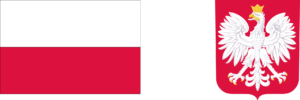Romania has spent the last two decades slowly but steadily transforming itself from a peripheral corner of the European Union into an emerging logistics hub at the crossroads of Central Europe, the Black Sea and the Balkans. Its territory is crossed by two of the EU’s core transport corridors – Orient/East-Med and Rhine–Danube – which link German and Central European industrial centres with the Black Sea port of Constanța, the Aegean and Turkey, integrating Romanian roads, railways, ports and airports into the wider TEN-T network.This geographical position, combined with large inflows of EU funds, is the main driver behind the rapid modernisation of the country’s transport and logistics system.
For years Romania was notorious for its lack of motorways compared with neighbours such as Hungary or Bulgaria. That picture is changing. The A1 and A3 motorway axes are progressively stitching together Bucharest, Transylvania and the Hungarian border, while the A2 links the capital directly with Constanța on the Black Sea. New expressways are under construction towards Bulgaria, Serbia and Moldova, designed to plug remaining “missing links” in the road network and to bring national standards closer to those typical in the Schengen area. These projects are not only about cutting travel times; they are also intended to remove bottlenecks along the European transport corridors and support higher-volume, time-sensitive road freight flows across the country.At the same time, the contrast between the relatively well-served western and southern regions and the less connected north-east remains visible, which is why new projects towards Iași and the Ukrainian and Moldovan borders have gained strategic importance after Russia’s full-scale invasion of Ukraine.
If roads are the most visible sign of progress, the rail network is Romania’s hidden asset. With around 10,800 kilometres of route length, of which roughly 4,000 kilometres are electrified, Romania still has one of the more extensive railway systems in the EU. The core network radiates from Bucharest towards major cities such as Brașov, Cluj-Napoca, Timișoara and Iași and on to neighbouring countries. However, decades of under-investment have left many lines in need of rehabilitation, and average commercial speeds on important routes remain modest by Western European standards. Modernisation works on TEN-T rail sections, deployment of the ERTMS signalling system and selective capacity upgrades are gradually improving the situation, especially on international freight corridors, but the system still has to bridge the gap between its geographical potential and its actual performance.
The strategic importance of Romania’s railways has become clearer since 2022. Lines connecting the Black Sea with Central Europe, and those leading to border crossings with Ukraine and Moldova, have turned into vital conduits for re-routed trade flows, including Ukrainian agricultural exports that can no longer use traditional Black Sea ports. In this context, rehabilitation of lines towards the Danube ports and the Hungarian border, as well as work on cross-border gauges and logistics facilities, has gained both economic and geopolitical urgency.
At the heart of the country’s logistics system lies Constanța, the largest port on the Black Sea EU coast and the maritime gateway of the Rhine–Danube corridor. The port handles a wide mix of bulk cargo, oil, containers and vehicles, serving both the Romanian economy and landlocked neighbours reaching global markets via the Black Sea. Constanța South, operated by DP World, functions as the main container hub; after a major expansion completed in 2024, the company more than doubled its container handling capacity to about 1.5 million TEU per year and added new project cargo and ro-ro facilities that can process up to 80,000 vehicles annually. The investment is backed by an inland terminal in Aiud, Transylvania, linked by rail to the port and by road to regional industrial clusters, creating a sea-to-hinterland corridor that shortens supply chains across Central and Eastern Europe.
Constanța’s role has been reinforced by the network of Danube river ports, which form an alternative route for bulk cargo and, increasingly, containers. The Danube corridor has become particularly important for grain shipments and other commodities diverted from Ukrainian ports, highlighting Romania’s function as a safety valve for regional food security.River navigation remains sensitive to water-level fluctuations and climate conditions, but planned upgrades to critical sections and port facilities aim to make this route more predictable and resilient.
Logistics in Romania is not only about seaports and long-distance corridors. Around them has grown a network of logistics parks, warehouses and intermodal terminals, concentrated above all in the Bucharest–Ilfov area, around Constanța and in dynamic western counties such as Timiș and Cluj. Private operators have developed rail-road terminals along the Rhine–Danube and Orient/East-Med axes to capture container flows moving between Western Europe, the Black Sea and Turkey.The inland dry port at Aiud, regional terminals near Oradea and Curtici close to the Hungarian border, and facilities around Bucharest are key nodes where containers can be shifted between train and truck, customs procedures handled, and value-added services such as consolidation or light manufacturing performed before goods move on to their final destinations.
These developments are reflected, albeit imperfectly, in international benchmarking. In the World Bank’s 2023 Logistics Performance Index, Romania sits in the middle of the global ranking and the middle tier of EU member states, with scores indicating average performance but a gradual upward trend over previous editions. The country performs reasonably well on the reliability and tracking of shipments, while lagging behind in infrastructure quality and the efficiency of border and customs procedures. For logistics operators and manufacturers, this means that Romania can already offer competitive solutions in specific corridors and sectors, but that network effects are still constrained by uneven quality across modes and regions.
One often overlooked illustration of Romania’s growing organisational capacity in logistics is the national deposit-return system for beverage containers, launched in 2023. It required the creation of a dense web of reverse-logistics flows, sorting centres and IT systems capable of tracking billions of bottles and cans. Within a short time the system started to reach high collection rates, signalling that public authorities and private logistics providers are capable of managing complex, data-driven operations on a national scale when the incentives and regulatory framework are aligned.
Looking ahead, the main challenges for Romania’s transport and logistics network are as much institutional as physical. Completing the core motorway and rail grid, particularly in under-served regions and at key border crossings, will demand sustained political commitment and efficient use of EU cohesion and recovery funds. Upgrading rail and river infrastructure to modern standards, and better integrating these modes with road transport, will be essential if Romania is to shift a larger share of freight away from trucks and meet EU climate goals. At the same time, the country must continue to simplify border formalities, digitalise port and rail operations, and ensure that new infrastructure is resilient to climate-related shocks along the Danube and in coastal zones.
If these obstacles can be addressed, Romania is well placed to consolidate its role as a key logistics gateway between the EU, the Black Sea region and, indirectly, the Caucasus and Central Asia. For European manufacturers diversifying supply chains, for Ukrainian and Moldovan exporters seeking reliable access to global markets, and for Polish and other Central European transport companies searching for new partnerships and routes, Romania’s evolving transport and logistics network is becoming an increasingly important piece of the regional puzzle.






